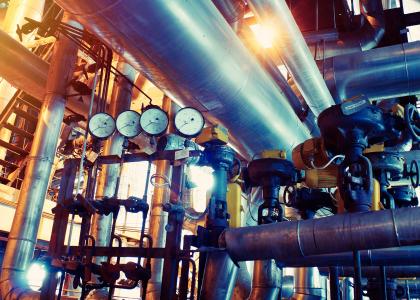In a new three-part video series, ACEEE explores how energy efficiency can improve people’s health. We hear the stories of homeowners in three states. To look at efficiency’s impact in rural areas, Part One takes us to McDowell County, West Virginia.
In the southernmost tip of West Virginia, where the state’s poverty rates are highest, Brenda Kelsor struggles with chronic breathing problems. She has bronchitis and chronic obstructive pulmonary disease, and her home — an old trailer — was only making matters worse. It lacked central air conditioning and insulation so she found it difficult to breathe in both summer and winter, noting, “It’s hard to breathe ... if it’s too hot or too cold.” After her home was weatherized, its indoor temperature remained pleasant and her utility bills decreased. “Oh, my god, it feels good in here,” she said about the difference. “This is going to help.”
Like Kelsor, many residents of rural areas such as McDowell County have inefficient homes with high energy bills. Efficiency upgrades not only save homeowners money but also can improve their health. Curtis Lindsey, the weatherization program coordinator for the Council of the Southern Mountains, said many local residents can’t afford to move or fix their homes. “They are freezing every winter. They’re burning up every summer. And weatherization can help people in that situation.”
The conditions inside a home can have a big impact on a person’s health, affecting exposure to indoor air pollution, allergens, disease-carrying vermin, and other hazards. Energy efficiency upgrades can make buildings safer and healthier. Weatherizing a home involves sealing up holes and cracks that can allow cold air — or pests — into the home. A residential energy efficiency program typically also repairs or upgrades appliances. This can reduce utility bills and eliminate health hazards caused when malfunctioning furnaces and hot water heaters spew carbon monoxide into a home.
Professionals like Mr. Lindsey who deliver weatherization services are typically trained in building systems and sciences. They identify hazards in a home and fix them. For example, they identify causes of moisture and ensure proper ventilation so that when the home is tightly sealed, air quality is maintained and mold doesn’t grow. These benefits are especially significant for vulnerable individuals such as the elderly, children, and people with respiratory illnesses, including asthma. By reducing a family’s utility bills, these efficiency improvements can also help those struggling to put food on the table.
In coming weeks, ACEEE will release the second and third parts in our video series on how energy efficiency is protecting health and changing lives. We look at outdoor air pollution in Pittsburgh and childhood asthma in Baltimore. These three videos will be posted on our new Health and Environment webpage. We will continue this discussion throughout 2018 with groundbreaking research and a first-ever Conference on Health, Environment, and Energy in New Orleans. We invite you to become part of the discussion as we explore the health and environmental impacts of saving energy.




